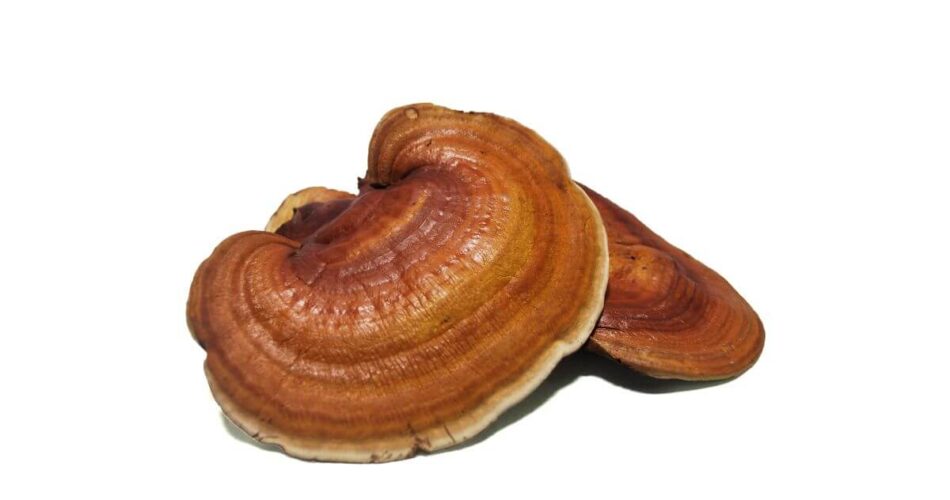Did you know that there is a mushroom that can make you hallucinate? The Gymnopilus luteofolius mushroom is known to cause hallucinations in humans. In fact, it’s been used in traditional healing practices for centuries.
Have you ever seen a Gymnopilus luteofolius mushroom? They are pretty rare, but if you’re lucky enough to spot one, be sure to take a picture! These shrooms have unique orange caps that make them easy to identify.
Gymnopilus Luteofolius – Description
The Gymnopilus luteofolius is a small, rusty orange fungus that typically grows on wood in clusters. It has a convex cap with a slightly depressed center, and yellow gills that are attached to the stem. The stem is short and thick, and the spores are olive-brown in color. This mushroom has a really bitter taste. The cap surface is initially smooth and sticky, but becomes dry and cracked with age.
The basidia (spore-bearing cells) are four-spored, and the cystidia (sterile cells) are absent. The flesh of the fruit body is thin and yellowish.
History
Gymnopilus luteofolius is a species of shroom in the family Cortinariaceae. This yellow-staining fungus was first described scientifically by mycologist John Buckley in 1844 as Agaricus luteofolius. It was transferred to the genus Gymnopilus by American mycologist Rolf Singer in 1951.
Colors
The fruit bodies of Gymnopilus luteofolius can have reddish, purplish or yellow caps, sometimes with green stains. The surface of the cap is covered with fasciculate scales that are purple in the beginning, soon fade to brick red, and finally become pale yellow. The context is rusty red to light lavender, and also fade to yellow as the mushroom matures.
Size
Gymnopilus luteofolius is a small to medium-sized mushroom that typically grows to between 2 and 8 cm in diameter. The caps are convex to slightly flatten in shape, and have a yellow to orange coloration.
Gymnopilus luteofolius has a fairly distinct appearance, making it relatively easy to identify. However, there are some other small to medium-sized fungi that may be confused with it. These include Gymnopilus ventricosus, which has a more reddish-orange cap, and Gymnopilus subviscidulus, which has a more greenish-yellow cap.
Gymnopilus Luteofolius – Habitat and Distribution
This particular species is found in North America, Europe, Asia, and Australia. It typically grows on decaying hardwood, mostly conifers.
This fungus prefers to grow in cooler temperatures and is often found near streams or in damp forested areas. Gymnopilus luteofolius can also be found growing on dead stumps, fallen logs, and rotting tree trunks. This species is a saprobic decomposer, meaning that it derives its nutrients from dead and decaying organic matter. These fungi usually grow in pecks.
Gymnopilus Luteofolius is a widely distributed mushroom that can be found on dung, wood or in soil. This mushroom is one of the few hallucinogenic species in the genus Gymnopilus. When consumed, it can cause gastrointestinal upset, including vomiting and diarrhea, so it should not be consumed.
Does Gymnopilus Luteofolius Contain Psilocybin?
Gymnopilus luteofolius is a species of mushroom that is mostly found in tropical and subtropical regions around the world. This shroom has been used traditionally by indigenous peoples for its psychoactive properties, and it is known to contain the compound psilocybin. Psilocybin is a naturally occurring psychedelic compound that is found in several species, and it is known to produce hallucinations and other psychedelic effects. There have been no reported overdoses or deaths from consuming Gymnopilus luteofolius.
Can You Eat Gymnopilus Luteofolius?
As with any mushroom, it’s always best to consult with a professional before consuming Gymnopilus luteofolius. This is especially true if you are unfamiliar with the mushroom or have any allergies. While Gymnopilus luteofolius is generally considered safe to eat, there have been some reports of stomach upset after consuming the mushroom. So it’s better to be on a safe side and avoid consuming it at all.
Similar Posts:
- Gymnopilus Aeruginosus – Species Information, Habitat & Morphology
- Gymnopilus Luteus Mushroom – Description, Habitat, How to Identify the Species
- Gymnopilus Luteoviridis Mushrooms: A Complete Guide
- Gymnopilus Validipes: All You Should Know About Magic Mushroom Species
- Gymnopilus Purpuratus. All You Need to Know About This Magic Mushroom Species
- Gymnopilus Viridans: Uncommon Shrooms Species
- Galerina Steglichii: A Very Rare and Mysterious Psilocybin Mushroom Found in a Greenhouse




